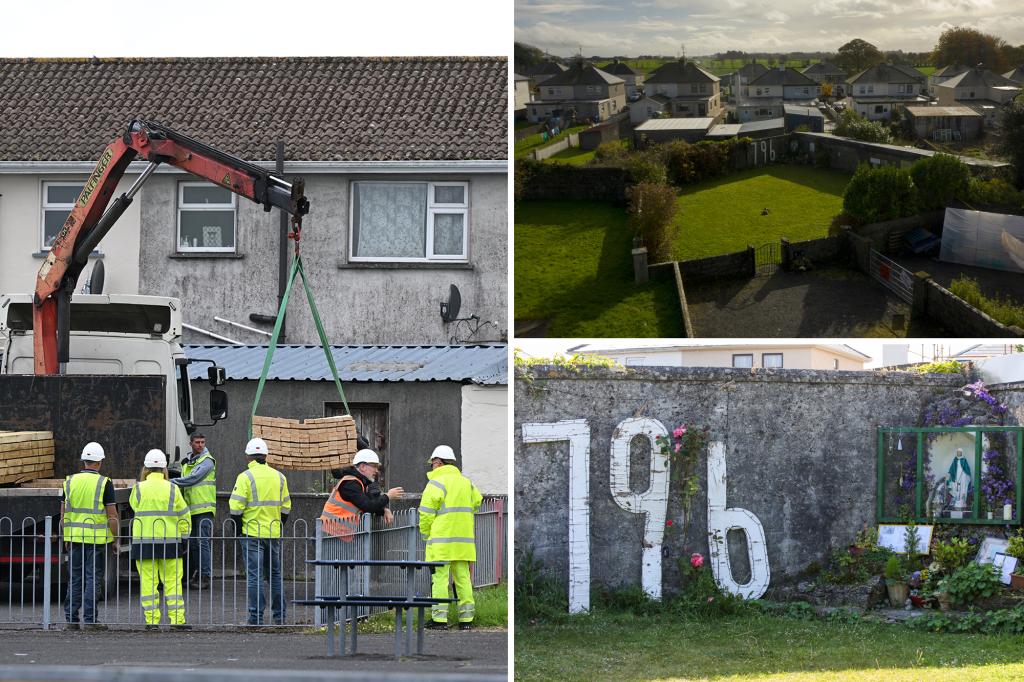
Excavation has commenced at a site in Tuam, County Galway, Ireland, where authorities believe the remains of nearly 800 infants and children may be buried. These children died at a home for unwed mothers operated by Catholic nuns between 1925 and 1961. The discovery of this potential mass grave has shed light on a dark chapter in Ireland’s history.
Local historian Catherine Corless, whose research brought this tragic story to light, told Sky News that many of the infant remains are feared to have been discarded in a cesspool known as “the pit” at the former institution. Her findings revealed that out of 798 children who died at the home, only two were buried in a nearby cemetery.
The Historical Context of Bon Secours
The Bon Secours Mother and Baby Home, known locally as “The Home,” was a maternity institution for unmarried mothers and their children, run by a religious order of Catholic nuns. Unmarried pregnant women were sent to the home to give birth and were often interned for a year to perform unpaid labor. The mothers were separated from their newborns, who were raised by the nuns and frequently adopted out without family consent.
The institution was demolished in 1971, and the land is now surrounded by a modern apartment complex. The full scale of the tragedy was only uncovered in 2014, thanks to Corless’s meticulous research, which pointed to a disused septic tank discovered in 1975 as the likely final resting place for the children.
Excavation and Investigation
After years of advocacy and legal hurdles, a team of investigators began their forensic work this week. The excavation is expected to take up to two years, aiming to identify the remains of the infants and provide them with a dignified reburial. This effort seeks to offer some degree of closure to survivors and families affected by the tragedy.
Annette McKay, whose sister is believed to be one of the victims, expressed her determination to see the investigation through. “I don’t care if it’s a thimbleful, as they tell me there wouldn’t be much remains left; at six months old, it’s mainly cartilage more than bone,” she told Sky News.
Personal Stories Emerge
Annette’s mother, Margaret “Maggie” O’Connor, gave birth to a baby named Mary Margaret at the home after being raped at the age of 17. The child died six months later, and O’Connor only learned of her daughter’s death when a nun informed her bluntly, “the child of your sin is dead.”
These personal stories highlight the systemic abuse and neglect that occurred within such institutions, which were part of a broader network of oppression against women in Ireland.
Broader Implications and Historical Parallels
Bon Secours was one of several institutions in Ireland that subjected women and children to harsh conditions. Mothers who “reoffended” by having more children out of wedlock were often sent to Magdalene laundries, infamous institutions for so-called “fallen women.” These facilities, run by Catholic orders and supported by the state, housed women deemed undesirable by society, including victims of rape and incest.
The commission report concluded that 9,000 children had died in such homes across Ireland.
The last of the Magdalene laundries closed in the 1990s, but their legacy continues to impact survivors and their families. In 2014, the Irish government issued a formal state apology, and by 2022, a compensation scheme had been established, distributing the equivalent of $32.7 million to 814 survivors. However, the religious orders that operated many of these institutions have refused to contribute to the compensation program.
Looking Forward
The excavation at Tuam represents a significant step in addressing past injustices and acknowledging the suffering endured by countless women and children. As the investigation progresses, it is hoped that more families will find closure and that Ireland will continue to confront and learn from its history.
Meanwhile, the story of Tuam and similar institutions serves as a reminder of the importance of transparency, accountability, and compassion in addressing historical wrongs. The excavation’s findings will likely have a profound impact on how Ireland reconciles with its past and moves towards a more inclusive future.





